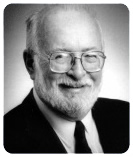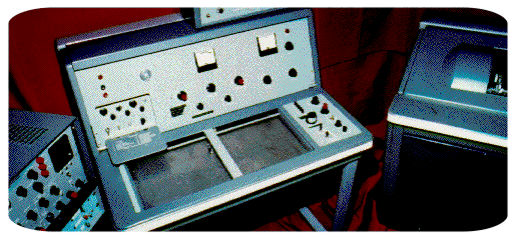Celebrating the Birth of MRI

Professor Paul C. Lauterbur was awarded the 2003 Nobel Prize in Physiology or Medicine for his ground breaking research in the Department of Chemistry at Stony Brook University that led to the invention of magnetic resonance imaging (MRI). Professor Lauterbur obtained a B.S. in chemistry at Case Institute of Technology in 1951, and then worked at Dow Corning’s Mellon Institute Laboratories, where he first learned how to use NMR. After serving in the Army, Professor Lauterbur continued research at the Mellon Institute where his studies on carbon-13 NMR provided the basis for his Ph.D. dissertation. In 1969 he was appointed as an Associate Professor of Chemistry at Stony Brook University where his research led to NMR imaging. Professor Lauterbur left Stony Brook in 1985 to become the director of the Biomedical Magnetic Resonance Laboratory at the University of Illinois. While the MRI technique has become a commonplace diagnostic tool for the routine examination of soft tissues, research in this area of scientific endeavor continues to produce amazing results.
Among the first living organisms to be imaged were aquatic snails obtained from West Meadow Beach close to Stony Brook University. MRI has subsequently developed into one of the most powerful diagnostic imaging methods, and ~40 million MRI scans are performed annually in the United States. In 1996 the Varian A-60 NMR spectrometer on which Professor Lauterbur performed his ground breaking experiments was put on permanent display in the lobby of the Graduate Chemistry building. The commemoration/dedication ceremony of the instrument display took place on Friday, April 26, 1996.

The ability to perform non-invasive imaging of the interior of living organisms using nuclear magnetic resonance is one of the most important medical discoveries of the twentieth century.
Professor Lauterbur passed away in 2007, and the department held a symposium to honor and commemorate his extraordinary contributions to science and medicine. Professor Richard Ernst, who was awarded the 1991 Nobel Prize in Chemistry, was the Presidential Lecturer at the symposium “Lauterbur’s Legacy: Looking at Life.” Speakers included former and current department faculty Professor Charles Springer and Professor Clare Grey, while family members Dan Lauterbur, Sharyn Lauterbur, and Elise Lauterbur gave remarks at the subsequent reception.
In July 2009, President Samuel Stanley and Professor Benjamin Hsiao, Department of Chemistry Chair at Stony Brook University received the 2003 Nobel Prize Medal replica from the Nobel Foundation. In October 2008 while attending the memorable event 'Celebrating 50 Years of Chemistry at Stony Brook, 1958-2008,' Dr. Joan Dawson, the late Professor Lauterbur's wife announced the donation of the Nobel Medal to Stony Brook University.



In 2011 the American Chemical Society designated the Chemistry Department at Stony Brook University as a National Historic Chemical Landmark for the development of magnetic resonance imaging, in recognition of Paul Lauterbur’s ground breaking work.



The MRI grew out of Professor Lauterbur’s interests in applying physical approaches to the analysis of biological systems. In recognition of his commitment to interdisciplinary research, Professor Robert Schneider, a faculty member in the department, started the Lauterbur Frontier Research Endowment Fund in Chemistry to support outstanding faculty and graduate students, and promote high-risk high-reward research in the areas of health, the environment, and energy. The Lauterbur Fund remained a passion of Professor Schneider’s until he passed away in 2017, and the Fund continues to be a central focus of our activities to foster innovation and research that address the major challenges of the 21st century.
To donate to the Lauterbur Frontier Research Endowment Fund in Chemistry, click below:
